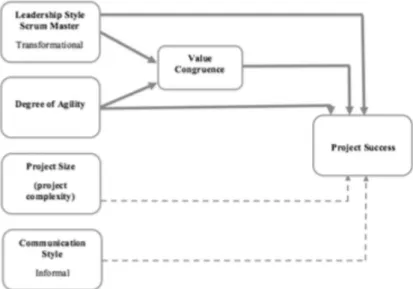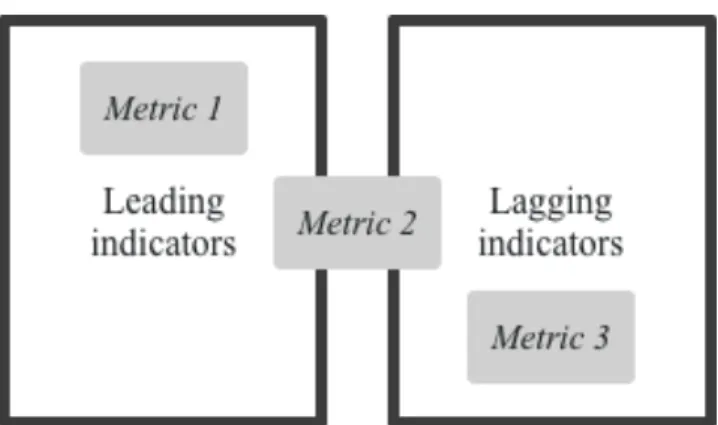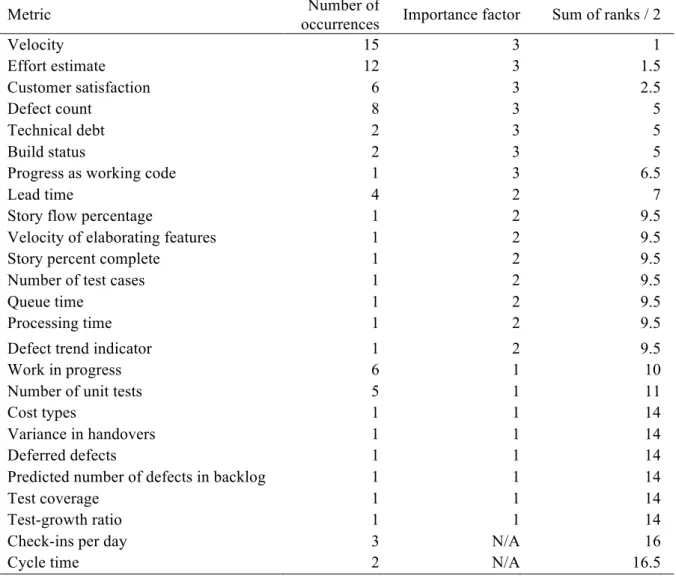Master Thesis Title A Quantitative Analysis of the Success of Agile IT Project Main Field Study Management. This will enable project managers to track and control the development process at different stages of the project lifecycle, leading to maximizing Agile adoption benefits. Second, quantitative measures, already used by organizations, were assigned to each of the success criteria and factors to see if they cover all aspects of project success.
This will enable project managers to track and control the development process at different stages of the project life cycle. Second, quantitative measures, already used by organizations, will be assigned to each of the success criteria and factors to see if they cover all aspects of project success. If not, other assessment techniques will be suggested. In chapter two, an overview of existing literature on the project success criteria and factors will be made.
The entire list will be checked for duplication and assigned different criteria and success factors. In the third chapter, the fuzzy analytic hierarchy process (AHP) analysis method will be presented to incorporate expert opinion.
AGILE PROJECT MANAGEMENT AND PROJECT SUCCESS
I NTRODUCTION TO A GILE METHODOLOGY AND METHODS
It proposed new ideas, completely different from those in the conventional way of project management (see Table 1). As can be seen from the key values, agile methodology is designed to simplify and accelerate the process of delivering working software by promoting communication, collaboration between all stakeholders and eliminating risks of being unable to respond to challenges during the project . Therefore, software features are broken down into smaller parts, eliminating the long-term planning from being directly involved in the feature development process.
Since one of the main risks of projects is related to inaccurate estimates and plans, managing software projects in this way promotes adaptation to changing needs at each stage of the process. How the traditional way of project management evolved into modern methods can be seen graphically in Figure 2. As more features are added, the design is made to fit perfectly with the current state of the product.
Name of the framework Key features References by two developers sitting at the same machine. Scrum Product owner: a person who communicates with customers and users and represents their opinion in the form of vision.

A GILE IT PROJECT SUCCESS IN CONTEMPORARY LITERATURE
Scrum Development Team: A multi-functional team, meaning there is no distinction between developers, testers or designers. There is a belief that agile methodologies that help small projects succeed may not be suitable for larger projects or projects with multiple teams (Rosser et al., 2014). A recent empirical study using a conceptual model (see Figure 3) suggests that project size cannot be used to explain the failure or success of an Agile project.
The model was tested on 40 Dutch projects, and it revealed that agile can be suitable for larger projects if there is “high value congruence, agility and transformational leadership” (van Kelle et al., 2015). Although there is evidence that Agile projects can succeed in different environments, evaluating success is often subjective. For example, in work by Serrador and Turner introduced earlier, authors used "a self-reporting (subjective) assessment of project success and the use of Agile methods." Therefore, in their paper, they look at perceived project success as reported by participants.
Not only do agile methods require different measurement techniques, but due to focus on simplification, risk associated with inappropriate success measurements is higher (Javdani et al., 2013). Currently, there are studies on metric use in project management (this will be presented in the next chapter), but research is mostly based on case studies, and there is no unified set that promises to cover all aspects of project success.

S UMMARY OF C HAPTER 1
RQ1: What parameters should be measured to distinguish a successful Agile IT project from one that is not.
VERSATILE ASSESSMENT OF AGILE IT-PROJECT SUCCESS
H OLISTIC VIEW ON THE A GILE PROJECT SUCCESS IN THE SOFTWARE INDUSTRY
Recently, an idea that stakeholder satisfaction plays a major role in project success was widely recognized (Serrador & Turner, 2015). Even the 5th edition of PMBOK, published in 2013, defines project success beyond the triple constraint, which is not even mentioned there (PMBOK 5th edition). In their research, they wanted to see how "Project Effectiveness" and broader "Project Success" relate.
After an extensive survey of 1,386 projects, authors found that project effectiveness correlates moderately strongly (correlation of 0.6 with R-squared equal to 0.36) to overall project success. In this work, we focus on the first time frame up to and including the point "End of the project" for three reasons. Since we are mostly interested in fine-tuning the project management process, we need to focus on the stage, when it happens.
Since the overall success of the project does not depend only on the efficiency of the project, it is important to consider additional factors. It emphasizes that those who started the project (actors) hope to achieve goals (benefits).

A CCESSING THE COMPLETENESS OF EXISTING METRICS PORTFOLIO
Enhancement Rate % of items from the last backlog included for production in the next backlog. As was mentioned earlier, we are interested in the project evaluation taking place at the latest at the end of the project. In the following sections, metrics from the list developed in the previous chapter will be assigned five success criteria.
Therefore, metrics that determine the productivity of the team and its ability to deliver working software at the end of iterations will be assigned to the scope criteria of success. Interestingly, in the software industry, time spent on the project and its cost are usually highly correlated, due to the high proportion of variable costs in the development process. In the list, there were 8 (15.6%) metrics that can help measure either predictability of development or stakeholder involvement.
It is an organizational characteristic that basically aims to clarify whether the entire team is located in the same physical location or not. There are no metrics that make it possible to record whether the team is together on the list. In the list, there are no metrics that make it possible to distinguish self-organizing teams from a traditional command and control team.
There are no metrics listed that would allow measuring the motivation of team members. The role of managers in agile differs significantly from that in a waterfall environment. In the list, there are no metrics that provide insight into customer relationships.
From the client's point of view, this is an additional cost because the people involved in the project should spend less time on other responsibilities they may have. The client (with technical input from the development team .) has full authority to do this, as this is one of the key tasks in the development process. There are only 3 metrics listed that can be used to measure this CSF.
There are no metrics that can help understand the quality of coding standards in the organization. Metrics that help identify whether refactoring has occurred are not present in the list.

S UMMARY OF C HAPTER 2
Therefore, it is necessary to further develop a checklist for project performance CSFs and their characteristics. The checklist should not only list the factors and their attributes, but also information about the relative importance of certain factors.
A CHECKLIST FOR ASSESSING PROJECT CONTEXT
- F UZZY A NALYTIC H IERARCHY P ROCESS (AHP) ANALYSIS METHOD
- Q UESTIONNAIRE FOR PRACTITIONERS OF A GILE PM IN IT PROJECTS
- R ESULTS INTERPRETATION AND DISCUSSION
- S UMMARY OF C HAPTER 3
From the matrix it is possible to extract the comparative weights of each of the categories. The question that was asked for each of the 21 pairs can be seen below (Table 8). When you evaluate the context of the project, for you, it is more important to evaluate.
Second, while the first two factors in the ranking can be expected to be at the top, as they are the cornerstones of the agile methodology. The fact that it found its place in the top half of the ranking can serve as further confirmation that Stakeholder Satisfaction plays an important role in project success assessment and should be considered. Based on the results of the survey, it is possible to put together a checklist for project managers (See table 10).
At the beginning of the chapter, the need to have a prioritized checklist was supported with three arguments. MADM techniques were presented and AHP was chosen as the most appropriate for the project's goals and scope. Finally, based on the results of the survey, a checklist was developed for project managers.
A checklist is completed to capture the initial setting of the team and make the project manager aware of all possible characteristics that influence project success. Immediately after completing the checklist, certain changes can be made based on the items that do not match or the checked items in the current checklist do not match those in the checklists of the previous projects. The pursuit of continuous improvement of all processes is one of the essential components of success in the modern, ever-changing world.
As more players embrace agile, tracking and monitoring the methodology becomes increasingly important to maintaining a competitive advantage. There was no one-size-fits-all approach to evaluating the success of agile IT projects and the latest industry surveys found that organizations identified this issue as one of the key challenges in achieving their objectives with methodology. To find suitable measurement techniques for each part of the success matrix, it was necessary to see which tools today's organizations already use for tracking and control.
First, the implementation of the proposed tracking and control methodology allows for a more objective assessment of the project's performance. Iteration burndown Graphic display of completed and remaining work in the iteration Execution time.






